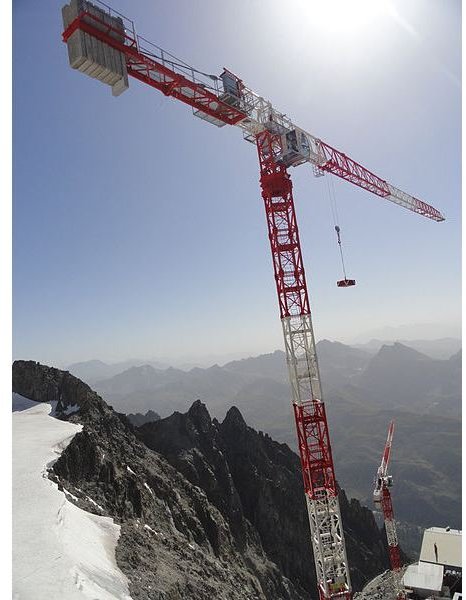Different Types of Cranes Used in Construction Industry
The invention of cranes made things easy for humankind because without them, loading, unloading, and lifting had to be done by human hands, would consume more time, and the entire system was not efficient at all. The ancient Greeks invented the first construction crane hundreds of years ago. Modern day construction cranes are huge, taking up tons of material hundreds of meters in height. For high end infrastructure projects, tower cranes are used that have a reach as high as 800 meters.
Working of Construction Cranes
A crane uses the pulley and cable system to create a mechanical advantage so that large loads can be lifted. The two most important criteria in crane design are lifting capacity and stability. Winders, cables, ropes, chains, and a basic level-pulley system are essential parts of any type of crane. The lever and other simple machines make work easier by decreasing the amount of force required to accomplish lifting and moving tasks.
Levers manipulate the torque involved and enable construction engineers to lift heavy loads. A pulley serves its basic purpose, which is to distribute the amount of weight needed to lift an object. Inclusion of electronic components has made cranes even easier to operate because the control remains no more manual. A hi-tech crane will essentially be a combination of simpler systems integrated together.
Different Types of Cranes
-
Tower Crane
Different types of cranes exist depending on the particular job that needs to be completed. One of the most commonly seen cranes seen in cities is a tower crane. Tower cranes were initially developed in Europe and are now popular all over the world. A tower crane is used in the construction of tall buildings. This type crane can reach up to 265 feet, out to 230 feet, and lift a total of approximately 20 tons. Tower cranes are fixed to the ground during the construction period. A tower crane is always mounted over a strong concrete pad so that anchor bolts can be embedded into the pad, which hold the tower crane when it is lifting heavy loads.
-
Vehicle Mounted Cranes
Since cranes used on construction sites are usually temporary structures, sometimes they are mounted to vehicles so that they can be easily moved. Truck-mounted cranes are usually able to travel on highways. Therefore, additional equipment is not necessary to transport the crane to the job site. When the crane is then erected at the construction site, outriggers are extended horizontally from the base of the truck and then vertically to stabilize the crane. -
Rough Terrain Crane
A rough terrain crane is a special type of truck-mounted crane. It is mounted to an undercarriage that has rubber tires specifically used for off-road applications. Outriggers are also used for stability with this type of crane. -
Crawler Crane
A crawler crane is a mobile crane that does not require outriggers for stability. A crawler crane is mounted to a chassis with a set of tracks instead of tires and has a lifting capacity from 40 tons to 3500 tons. Although crawler cranes are mobile around a site, they usually need to be disassembled and loaded on to transport trucks for movement between sites. -
Aerial Cranes
Aerial cranes are also called “sky cranes” as they are helicopters used exclusively to lift very heavy loads. These cranes are very useful in conditions where conventional cranes do not work. At a construction site, these cranes also help in disaster mitigation and risk relief programs. -
Other types of mobile cranes used in construction are floating cranes. Floating cranes are usually used in waterway construction such as bridges, ports, and dams. Floating cranes are either mounted on pontoons or on special barges.
These are the typical cranes used in construction. Other types of cranes do exist, though. For example, fixed cranes usually have the ability to lift and carry greater loads due to their increased stability. Cranes are also used inside manufacturing plants to assemble equipment. Cranes in manufacturing plants are usually overhead cranes that move along beams which give support in lifting. Finally, sidelifter cranes are specifically designed to load containers for trucks or railway vehicles. The lifting is performed with parallel crane-like hoists.
While working with cranes, the employer must ensure employee safety because falling from an overhead or tower crane would be fatal. Employers must be in compliance with rules and regulations set by the Department of Labor and Industries.
References
-
How Tower Cranes Work, Deckrane.com (pdf)
-
Types of Cranes, Norman-Spencer (pdf)
-
Images
Tower_Crane by Kristoferb, Wikipedia
